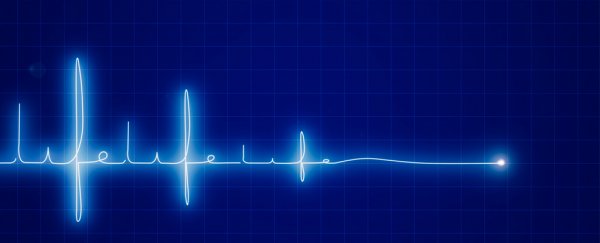Giving up the organs of a loved one while their final breath still lingers in the air remains one of the most emotional decisions any person would have to make.
The findings of a new study on the dying process might not make the call any less painful, but it just might help some of us sleep a little easier at night, while fostering trust with the doctors overseeing our final moments.
Working closely with the Canadian Donation and Transplantation Research Program, doctors from the Children's Hospital of Eastern Ontario measured cardiac activity and blood pressure at hundreds of intensive care units in Canada, Czechia, and the Netherlands.
Their goal was to tally instances of an ill person's heart spontaneously – if briefly – resuming its ticking after what's presumed to be the final tock.
For most of history, death has been synonymous with cardiac arrest. The difference between a living being and a body destined for the morgue has come down to little more than an ability to find a pulse.
Today we know better. The mix of features we associate with a thriving human – from brain activity to the mere metabolising of a cell – each come to a halt in their own time.
Choosing any one of them to represent a full stop to our existence is a job for philosophers, not scientists.
Yet coming to an agreement on a set of criteria to represent our passing goes well beyond the academic. Where organ donation is anticipated, every moment tissue is starved of oxygen is a moment too long.
Watching the clock after a person has passed away is hard on those who are freshly grieving. For the doctor counting the seconds, it can be a test of trust.
There is no shortage of attempts to come to some kind of consensus of an end to life all are happy with, based on a mix of hard facts and culturally sensitive values.
But checklists of vital signs and brain stem activity can be complex, not to mention clinical, leading some medical systems to rely on circulation as an indicator of life under specific circumstances, such as where life-support has recently been removed.
The specific time period of an absent breath and pulse varies from place to place, but five minutes is a widely accepted count. After which, goodbyes must be said and recovery of tissues has to commence.
Instances of organ retrieval occurring in just over a minute of pulse absence for infants can be particularly heartbreaking, no matter how fragile their oxygen-starved organs might be.
Even the most scientific of us in those moments could be forgiven for holding out some hope of a heart jumping back into life. Which is where research like this can be helpful.
Among the 480 patients who qualified for the study and had ample data available, 67 – just 14 percent – showed signs of a returning heartbeat. On average, this flicker lasted barely a few seconds, and none of them regained life.
Of those who experienced a brief pulse, just five had a beat that was noticeable at the time from their bedside. For the rest, evidence of their cardiac activity had to wait until a review of their electrocardiogram (ECG) data.
In 55 cases, resumptions followed a period of no pulse measuring between one and two minutes. The longest any of the patients went without a heartbeat – followed by a short return to having a pulse – was 4 minutes, 20 seconds.
Focusing on the 32 patients who had agreed to be organ donors, there were just two resumptions of cardiac activity; one at 64 seconds, and another at 151 seconds.
Coupled with measures of failing arterial pressure and particulars of the electrical activity spiking across the heart, the data strongly support the 'five minute rule' of cardiac arrest, at least for patients who had been relying on life support. For others, more involved measures might well be necessary.
Predicting how our final moments play out is vital in situations where timing matters.
But knowing what to expect also helps family and friends resolve lingering doubts over medical decisions that are literally a matter of life and death.
This research was published in the New England Journal of Medicine.
